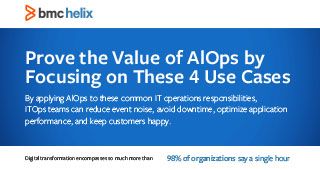The evolution to 5G will open a world of new opportunities for telecommunications businesses across a broad spectrum of enterprise and vertical markets. Greater bandwidth, faster speed, and lower latency allow the creation of new types of applications from remote surgery, to autonomous vehicles, to smart factories. Network slicing makes it possible to serve multiple customers or markets through a single 5G network. Deployed in tandem with workloads operating on Multi-Access Edge Compute (MEC), 5G will play a foundational role in a new era of computing architecture. It’s an exciting time to be in telecommunications—but to capitalize fully, operators will need to maximize the speed and agility of 5G deployment and operations at scale. That makes automation a mission-critical capability for the modern telecommunications business.
Meeting the operational needs of 5G
Supporting 5G poses new operational challenges in two ways. To begin with, network complexity grows significantly due to the increased cell density needed to cover a given area—far beyond 3G and 4G—as well as the increased presence of workloads delivered at the edge as needed to meet the demand for ultra-low-latency services. Operating 5G networks at scale, and managing them effectively, simply isn’t feasible with traditional methods. This is especially true given the time pressures at hand. Facing fierce competition for new market opportunities, as well as unpredictable shifts in customer requirements and demand, operators need the agility to pivot quickly while maintaining service quality and cost control.
The rise of everything-as-software networking offers a more flexible way forward. By using cloud network functions (CNF) to deliver network functionality via containers, operators can escape the constraints of legacy hardware, while software-defined networks (SDN) allow them to orchestrate network services through centralized, programmable control. This makes it possible to adjust network parameters more easily to meet the requirements of new services and the requirements of specific customers. But software-driven networking is only part of the solution; intelligent automation and AIOps are necessary to complete it.
Advanced technologies such as artificial intelligence and machine learning, complemented by initiatives such as ONAP seeking to drive fully autonomous networking, are now ushering in a new era of network automation. By using analytics to both augment and increasingly replace human decision processes, operators can manage complex 5G networks and ensure service quality more efficiently at scale. The ability to fully automate network orchestration makes it possible to respond more quickly to customer requests while maintaining control and governance. Using AIOps to improve the detection and correction of network issues automatically, before they impact service quality, enables operators to deliver at scale, meet customer expectations and build stronger relationships for their 5G business model.
Leveraging the agility and elasticity of the cloud
Cloud resources are the key to agile and elastic 5G deployment. By tapping into compute and storage resources as a service, operators can adapt quickly and cost-efficiently to shifts in customer demand. The fast, frictionless scalability offered by the cloud also helps operators accommodate the vast amounts of data needed to make effective use of AI-powered network automation. Moving customer workloads closer to the consumer will reduce latency for 5G-enabled enterprise and vertical industry applications. Migrating OSS/BSS systems to the cloud can lower costs while increasing agility.
At the same time, growing cloud operations can also increase management complexity as well as the risk of security breaches and a growing regulatory burden. To take full advantage of the agility and elasticity of the cloud, operators need to be able to migrate data to and across environments easily and securely, optimize the placement of cloud-based workloads for performance and cost, ensure business continuity, maintain data privacy, and ensure the integrity of business-critical data. Here again, intelligent automation and AIOps are critical for addressing key aspects of 5G networking. Automated infrastructure management can simplify cloud operations and accelerate cloud migration. Automated cloud remediation and compliance enable operators to detect and close security gaps and prevent regulatory lapses across constantly-changing cloud environments and applications.
Enabling new enterprise and vertical markets
While 5G networks offer benefits for every type of customer and use case, the core business case for many operators centers on the opportunity to enter new business markets. 5G network slicing makes it possible to deliver private corporate networks to multiple enterprise customers through a single 5G infrastructure. MEC computing and ultra-low latency applications enabled by 5G allow operators to address use cases across industries including healthcare, agriculture, manufacturing, mining, transportation—the list goes on.
As operators work to deliver more advanced services and solutions for customers, agility continues to be a priority. Adopting DevOps concepts, embracing continuous delivery, and moving away from slower-paced waterfall processes and less frequent release schedules can help operators meet the demands of fast-moving markets, but it also calls for an equally agile approach to application testing. By automating the execution of regression, performance, and other tests as part of the CI/CD pipeline, operators can deliver higher-quality software more quickly and efficiently to capitalize on emerging opportunities.
In my next blog, I’ll discuss the evolution of Service Assurance for the 5G era and how operators can address the challenges posed by rising data volumes, siloed ticketing systems, complex ecosystems, and slow, fragile integration methods through use of AIOps and Intelligent Automation.







